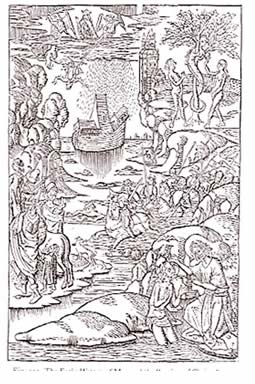










 |
 |
 |
 |
||||||||
 |
|||||||||||
 |
 |
 |
 |
 |
|||||||
 |
|||||||||||
| An Epoch in an Image It is a recognisable category of illustration - the pictorial attempt to encompass the entirety of an historical, gelogical, cultural period in the one image - eg Flaxman's illustration to Hesiod , and a sequence of Ages. Above, medieval woodcut, c1490, details unknown - from the Flood to the Baptism of Christ. |